
It’s a common misconception that you cannot launder sweaters in a washing machine. The truth is that you need to follow the proper steps to protect these garments, but you certainly can use a washing machine. You may even find that your washer is both more convenient and more effective than other methods for cleaning your knitwear. Follow the steps below and you can skip the laborious hand washing and remove dry cleaning from your long list of weekly errands.
How to Machine Wash a Sweater
I’ve used this method with all types of sweaters – fine cashmere included. My washing machine is a relatively new front loading Samsung model with all of the modern features. If you’re using an older top-loading machine, then proceed with caution.
1: Fold the sweater
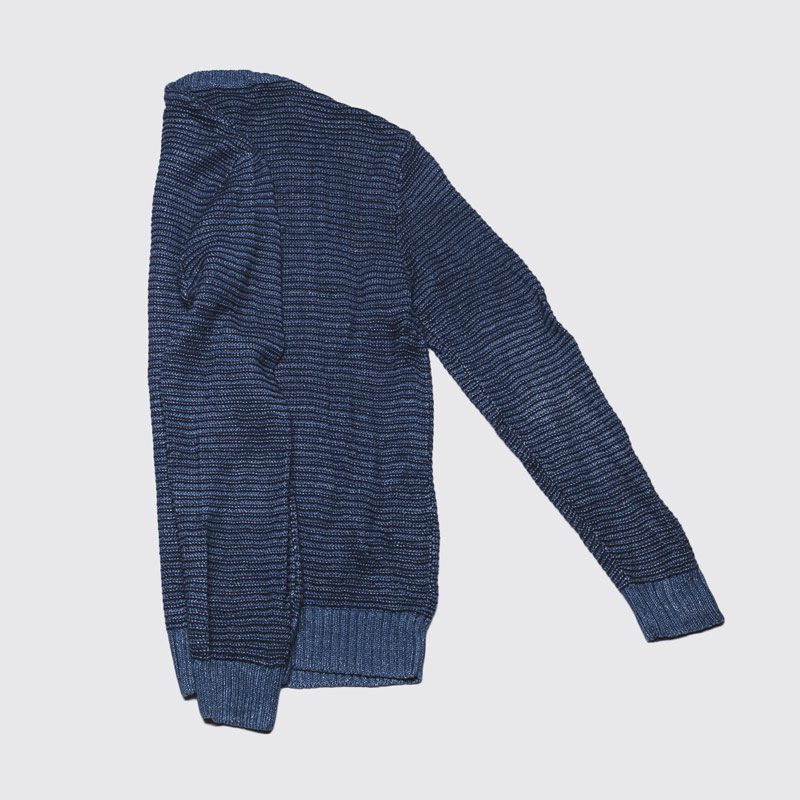
Fold the sweater into a long rectangle. Use the pattern above or any way you please.
2: Roll it up tightly
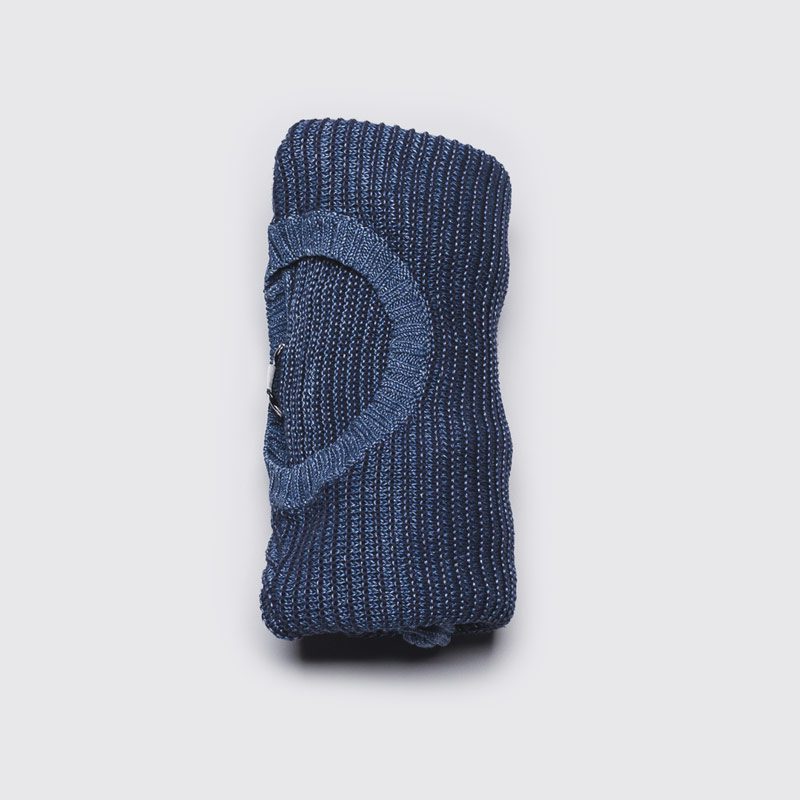
Once you have a rectangle shape, simply roll it up so it looks like a cylinder.
3: Place sweater inside a fine mesh bag
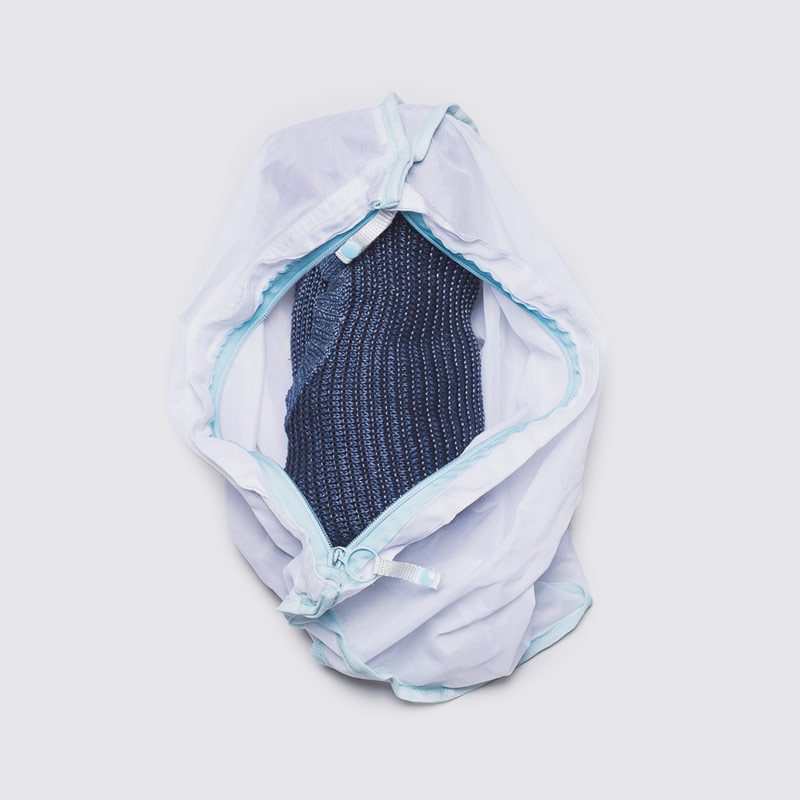
Mesh bags are useful for laundering delicate items like bras and lace underwear. You can buy them for a few dollars at stores like Bed, Bath & Beyond. Be sure to get a bag made from a fine mesh, not a fishnet.
4: Secure with safety pins
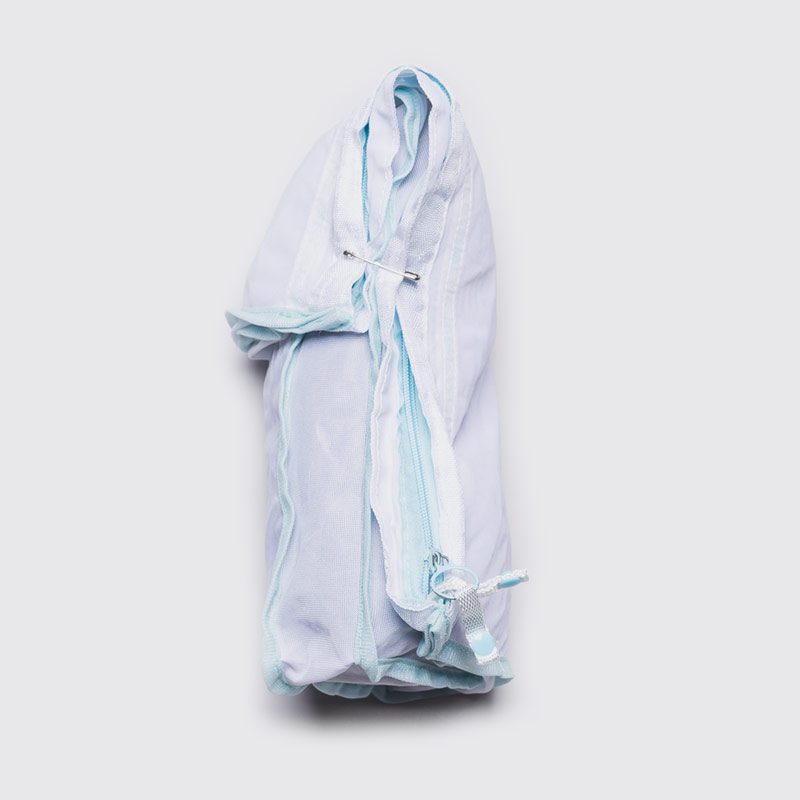
If the bag is loose, use safety pins to securely tighten the mesh around the garment.
5: Quick cycle wash with like colors
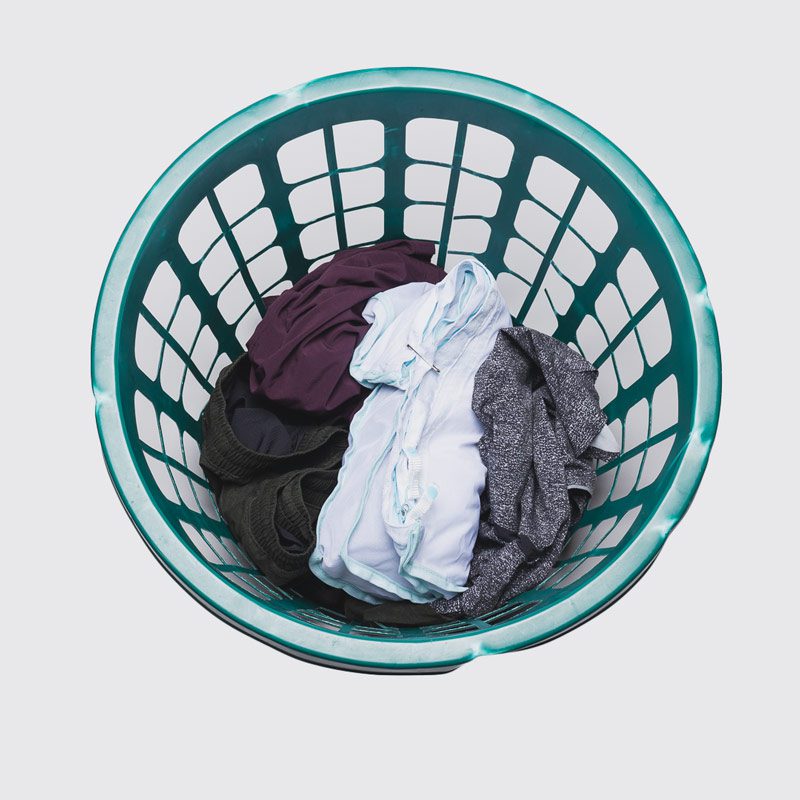
Use the quick (<30 min) cycle on your washing machine with a high spin setting. Group with like colors and lighter weight fabrics (think t-shirts and boxer shorts).
7: Air dry
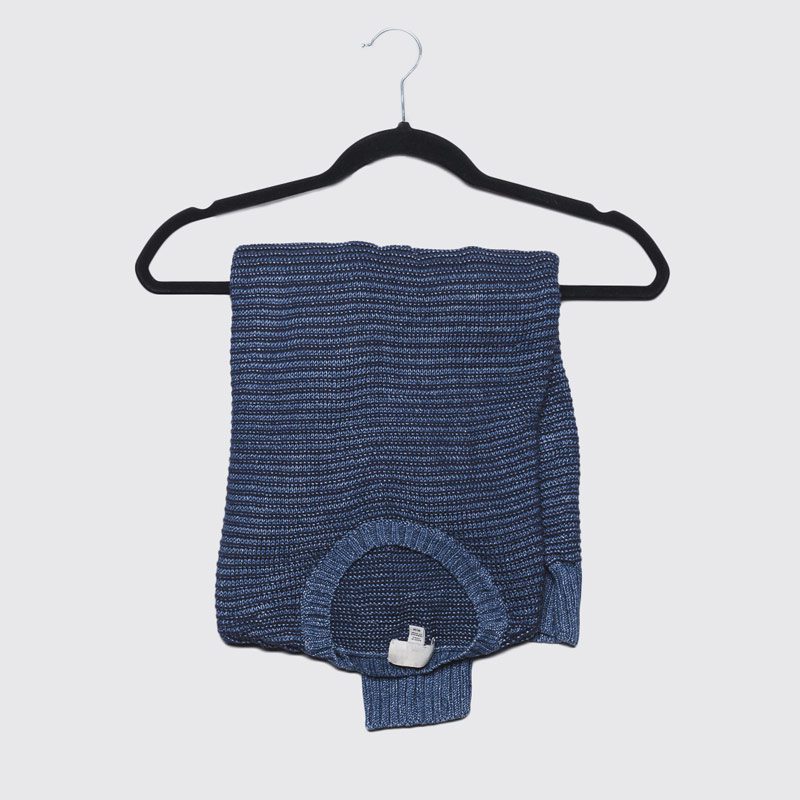
Use a drying rack or hanger to air dry the sweater. Do not use your drying machine. The spin feature on your washer will remove most of the water and leave your sweater just damp. Depending on your climate, air drying should only take 3-4 hours.
To maximize life of a sweater, you should wash it only 1-2 times each season. In between washes, use a brush to remove lint or dust as needed.
For more detailed information, I recommend the book Laundry Love by Patric Richardson, which is the inspiration for this article.
